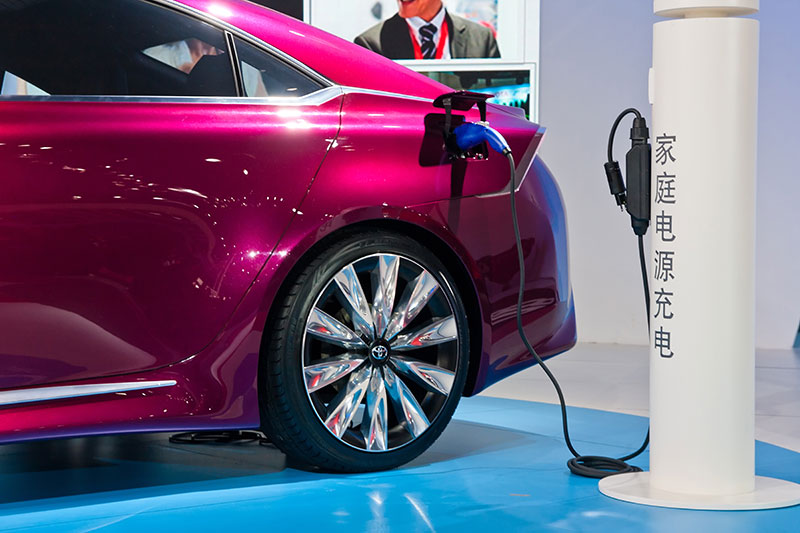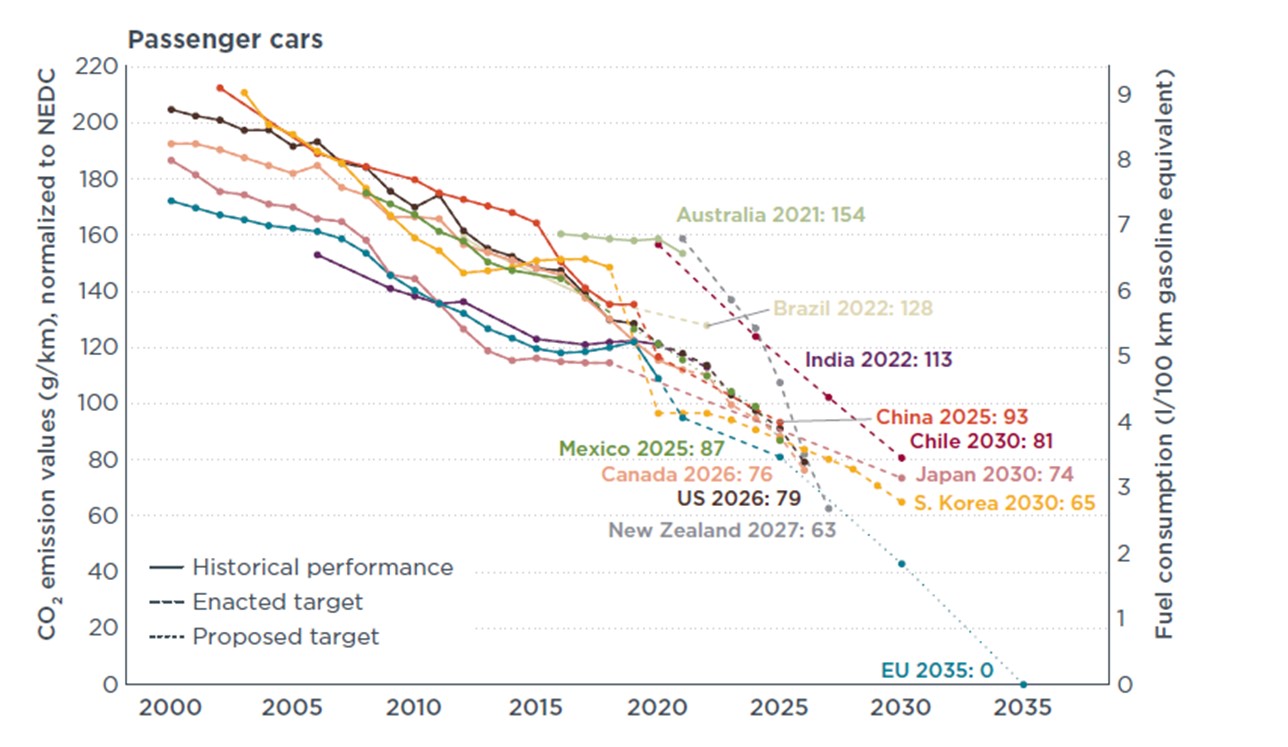China publishes updated fuel economy standards with mandate for EVs

China’s Ministry of Industry and Information Technology (MIIT) have published their final rule on passenger car fuel economy standards, which includes a new mandate for ultra-low/zero emission Electric Vehicles (EVs). The existing fuel economy standards with a target of 5 L/100 km in 2020), will stay the same.
The document (in Chinese here) is entitled "Parallel management regulation for corporate average fuel consumption and New Energy Vehicle credits for passenger cars.” China uses the term ‘New Energy Vehicle’ to refer to plug-in electric vehicles, and includes only battery electric vehicles and plug-in hybrid electric vehicles.
This will be the world’s first ZEV mandate policy at the national level, which will significantly drive China’s EV sales, especially after the phase-out of China’s national purchase subsidy for NEVs in 2021.The mandatory requirements on New Energy Vehicle credits will start in 2019. They are equivalent to a zero emission vehicle (ZEV) mandate, such as has been implemented in California.
Drew Kodjak, Executive Director of GFEI partner the International Council on Clean Transportation said “It is vital for the climate and urban air quality that governments adopt policies to promote a rapid transition to efficient, zero emission vehicles. Since China is the world’s largest auto market, this policy will undoubtedly speed up the global transition to a zero emission fleet. We will continue to track the market response to this new innovative policy.”
HOW IT WORKS (source - ICCT):
- Auto companies generate New Energy Vehicle scores by producing or importing New Energy Vehicles. A company’s actual New Energy Vehicle score is calculated by summing up the products of annual manufacturing or import volume of each new energy vehicle type and the per-vehicle new energy vehicle score. Different per-new energy vehicle scores are assigned to each type of new energy vehicle based on electric range. For example, if SAIC produces 100 BEVs with 100km electric range and 200 battery electric vehicles with 300km electric range, its actual new energy vehicle score in 2019 will be 1,080, or more than 3x the vehicles produced.
- The percentage requirements mentioned above (10% and 12% in 2019 and 2020) do not mean that the market share of New Energy Vehicles in China in 2019 and 2020 will be 10% and 12%. For example, if all the New Energy Vehicles produced by Shanghai Auto Company are New Energy Vehicles whose per-vehicle new energy vehicle score is 2, they can achieve their NEV score target in 2019 as long as their new energy vehicle production equals to 5% (instead of 10%) of their conventional fuel car production.
- A company generates new energy vehicle credits if its actual New Energy Vehicle score is higher than its target NEV score. It will face a new energy vehicle score deficit if its actual new energy vehicle score falls short of its target.
- Under the new regulatory framework, auto companies are also allowed to apply New Energy Vehicles towards compliance with existing fuel economy standards with zero upstream CO2 along with multipliers starting with 3x in 2019 and 2x in 2020.







